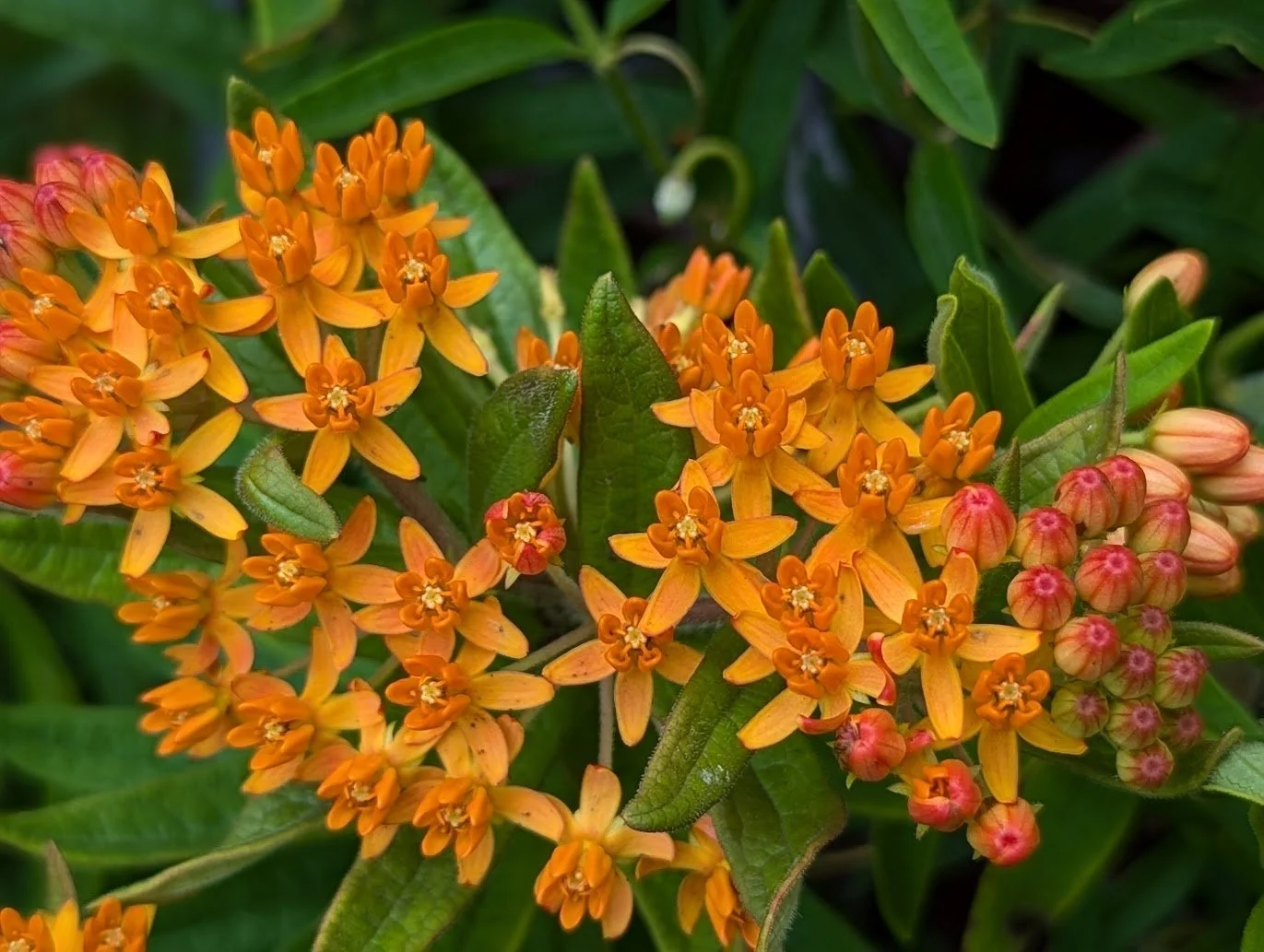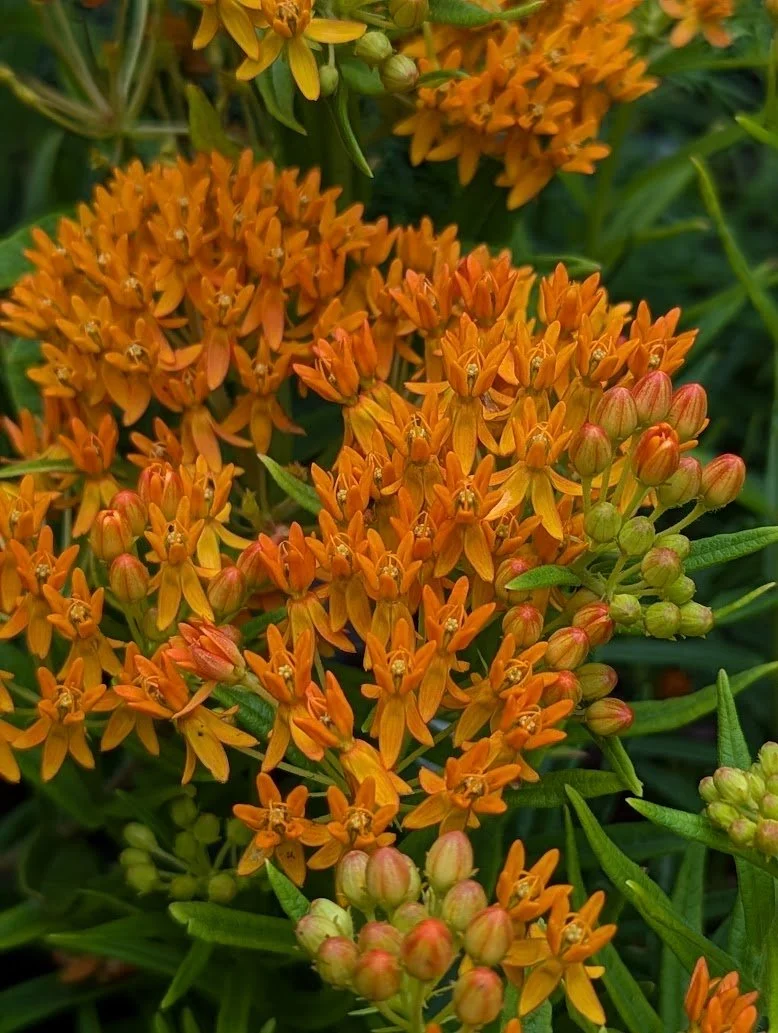Asclepias tuberosa 'Gay Butterflies' (Gay Butterflies Milkweed) (1 gal)
This striking perennial mixes bright orange, yellow and red fragrant flower clusters on upright clumping plants that grow 2 to 3 ft. tall and wide. As its name implies, it is beloved by many species of butterflies (including the Monarch, which is not a resident of our Salish Sea/Puget Sound region) and many other pollinators and beneficial insects, as well.
The plants bloom from June into early fall (September), then form attractive seed pods prized for flower arrangements. Butterfly milkweed prefers full sun and well-drained soil and will be late to emerge in the spring, so use caution not to pull the weed-like plants by mistake.
A terrific choice for vivid color late in the season, it pairs nicely with native perennials that finish their blooms by early summer. Drought tolerant once established and deer resistant.
This striking perennial mixes bright orange, yellow and red fragrant flower clusters on upright clumping plants that grow 2 to 3 ft. tall and wide. As its name implies, it is beloved by many species of butterflies (including the Monarch, which is not a resident of our Salish Sea/Puget Sound region) and many other pollinators and beneficial insects, as well.
The plants bloom from June into early fall (September), then form attractive seed pods prized for flower arrangements. Butterfly milkweed prefers full sun and well-drained soil and will be late to emerge in the spring, so use caution not to pull the weed-like plants by mistake.
A terrific choice for vivid color late in the season, it pairs nicely with native perennials that finish their blooms by early summer. Drought tolerant once established and deer resistant.
This striking perennial mixes bright orange, yellow and red fragrant flower clusters on upright clumping plants that grow 2 to 3 ft. tall and wide. As its name implies, it is beloved by many species of butterflies (including the Monarch, which is not a resident of our Salish Sea/Puget Sound region) and many other pollinators and beneficial insects, as well.
The plants bloom from June into early fall (September), then form attractive seed pods prized for flower arrangements. Butterfly milkweed prefers full sun and well-drained soil and will be late to emerge in the spring, so use caution not to pull the weed-like plants by mistake.
A terrific choice for vivid color late in the season, it pairs nicely with native perennials that finish their blooms by early summer. Drought tolerant once established and deer resistant.


